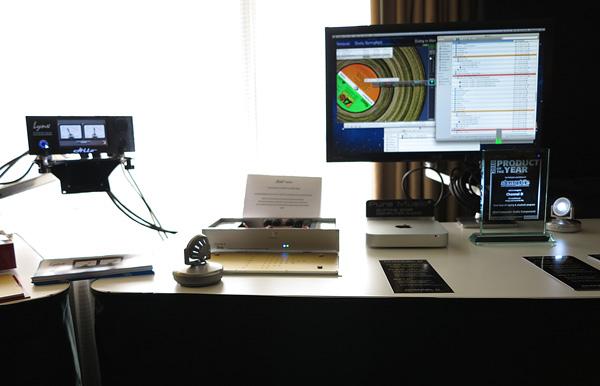| Columns Retired Columns & Blogs |
If RIAA is already added during the mastering process, wouldn't it get a double dose?

Admiring the beautiful grace of presentation, as well as its spaciousness, I asked Channel D Rob Robinson what was going on. “I take RIAA out of the phono stage and put it into the software,” is more or less what he replied. He must be doing something very right, because a file of Van Morrison’s “Tupelo Honey” was exceedingly lovely, open and clear.
Credit, of course, is also due the Joseph Audio Pulsar loudspeakers ($7000/pair), which I thought a bit too far apart for such nearfield listening; Lynx Hilo mastering quality USB ADC/DAC ($2499), Channel D Seta Model Plus (Special Edition) phono preamplifier with analog RIAA module ($6998), Channel D Seta DAC Buffer / Transimpedance amplifier ($3499), AMG Viella V12 turntable with AMG tonearm, Zu Audio Denon DL103 Prime 2 cartridge, and Merrill Audio Veritas mono block amplifiers ($12,000/pair).

If RIAA is already added during the mastering process, wouldn't it get a double dose?

...researched what the entire "pure vinyl" process was to begin with. Now it makes total sense. Thanks for the explanation.

I like the idea of software that does the RIAA compensation, but would like to do it without investing in big buck electronics. What's needed is an affordable (under $250) preamp, without RIAA circuitry, capable of boosting the signal level from one's cartridge to a level that is acceptable for feeding to an ADC. Channel D's phono pre will do it, but at a cost that is beyond my budget. I suspect that many more of us would archive our vinyl with Channel D's software if we could buy such a piece of equipment.
Goofy

... is defeatable. I use Pure Vinyl with my existing, decidedly mid-fi vinyl rig (Rega P3/Sumiko Blackbird/Whest Two), and get great results ripping at 192/24 with the Lynx Hilo shown in the picture as my A/D converter.